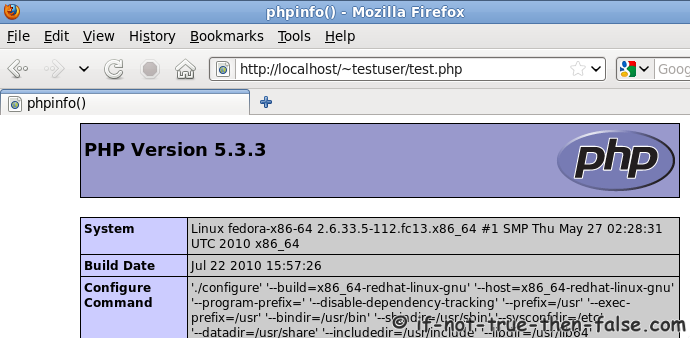Installing Php In Apache 2.2 Programs
8.1 Create a file named test.php inside C: Program Files Apache Software Foundation Apache2.2 htdocs (because that’s where the default document root path of your apache) 8.2 Add below line to the test.php file like shown on below image, then save and close the notepad. A 'LAMP' stack is a group of open source software that is typically installed together to enable a server to host dynamic websites and web apps. This stack typically consists of the Linux operating system, the Apache web server, a MySQL database, and.
Configuring PHP Development Environment in Windows This tutorial shows you two ways of configuring your PHP development environment on the Windows operating system. The first and most convenient way is to install and configure an AMP ( Apache, MySQL, PHP) package. This tutorial shows you how to install the XAMPP package. The second way is to install and configure each component separately. Contents • • • • • • • • • • To follow this tutorial, you need the following software and resources. Software or Resource Version Required PHP download bundle A PHP engine Version 5. A web server is recommended.

Included in XAMPP Windows. A database server is recommended. Included in XAMPP Windows.
A PHP debugger (optional) Typically, development and debugging is performed on a local web server, while the production environment is located on a remote web server. Setting up a remote web server is described in. This tutorial has you set up a local web server. PHP support can be added to a number of local web servers (IIS, Xitami, and so on), but most commonly is used.
Apache HTTP server is included in the XAMPP AMP package used in this tutorial. For information on installing and configuring Apache HTTP server standalone, click. Required Software To create, run, and debug your PHP projects you need the following software: • The NetBeans IDE for PHP. Ed Marlo Cardician Pdf Printer.
Downloads are available. • A web server. Typically development and debugging is performed on a local web server, while the production environment is located on a remote web server. The current version enables using a local server. Using a remote server with FTP access will be supported in future versions. PHP support can be added to a number of web servers (IIS, Xitami, and so on), but most commonly is used. Click for information on how to install and configure Apache 2.2.
• The PHP engine. The supported version is PHP5. Downloads are available. • The PHP debugger. The NetBeans IDE for PHP allows you to use, but using a debugger is optional. The recommended version is XDebug 2.0 or higher as it is compatible with PHP5.
• A database server. You can use various database servers while one of the most popular ones is the MySQL server. Downloads are available. Note: The recommended version of the product is MySQL Server 5.0. The provided documents describe the work with this version.
After the installation, you need to set up the environment that all the software components work properly with each other. You can use a, that contains the required software,. Using an AMP Package To have all the configuration settings for the PHP engine, the Apache HTTP Server, and the MySQL database server specified automatically, use an AMP package. Artistic Anatomy By Dr Paul Richer Pdf Printer. This tutorial gives instructions only for the package.
For help with the WAMP package, please see the. Installing and Configuring the XAMPP Package The section describes how to download, install, and configure the XAMPP package. Warning: Do NOT use XAMPP 1.7.0. There are significant problems with XDebug in this version. Use version 1.7.1 or later, where these problems are fixed. Note: Starting with XAMPP 1.7.2, XAMPP comes with PHP 5.3, not PHP 5.2.x. NetBeans IDE for PHP version 6.7.x does not support the new PHP 5.3 functions.
NetBeans IDE for PHP 6.8, currently available as a development build, fully supports PHP 5.3. Also note that Xdebug installation differs between PHP 5.2.x and PHP 5.3. • Download the installer package. (XAMPP Lite does not include XDebug.) • When the download is completed, run the.exe file.
On Microsoft Vista, the User Access Control feature blocks the PHP installer from updating the Apache httpd configuration. Disable UAC while you are installing XAMPP. See for more information. • You are given the option to install the Apache server and the MySQL database server as services.
If you install the Apache Server and MySQL as services, you will not have to start them manually through the XAMP Control Panel. Note that you have the option to install or uninstall these services in the.
• If you are using the self-extracting archive, after the archive is extracted, run the file setup-xampp.bat to configure the components of the package. (The XAMPP installer runs this file automatically.) • After configuration, open the XAMP Control Panel. (You can open it manually by running the file XAMPP_HOME/xampp-control.exe or from the Xampp Control Panel icon that is automatically placed on your desktop.) When you open the XAMPP Control Panel, note that the modules that are installed as services are already running. Warning: On Windows Vista sometimes xampp-control.exe will not run. You can run xampp-start.exe instead.